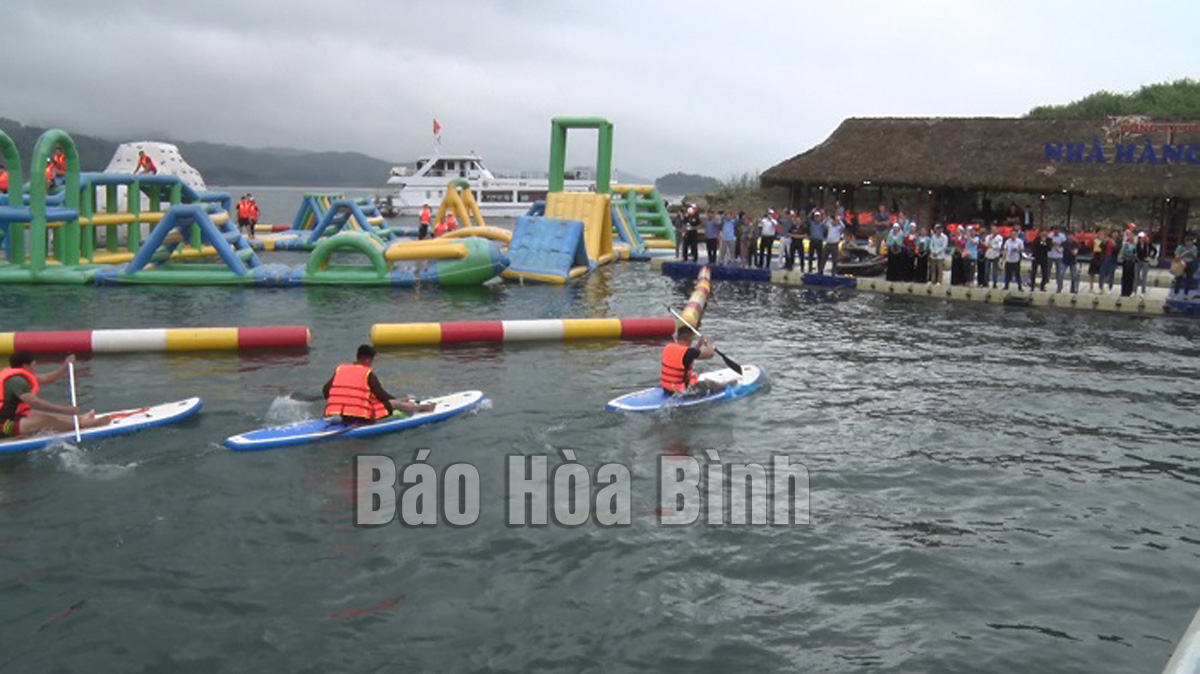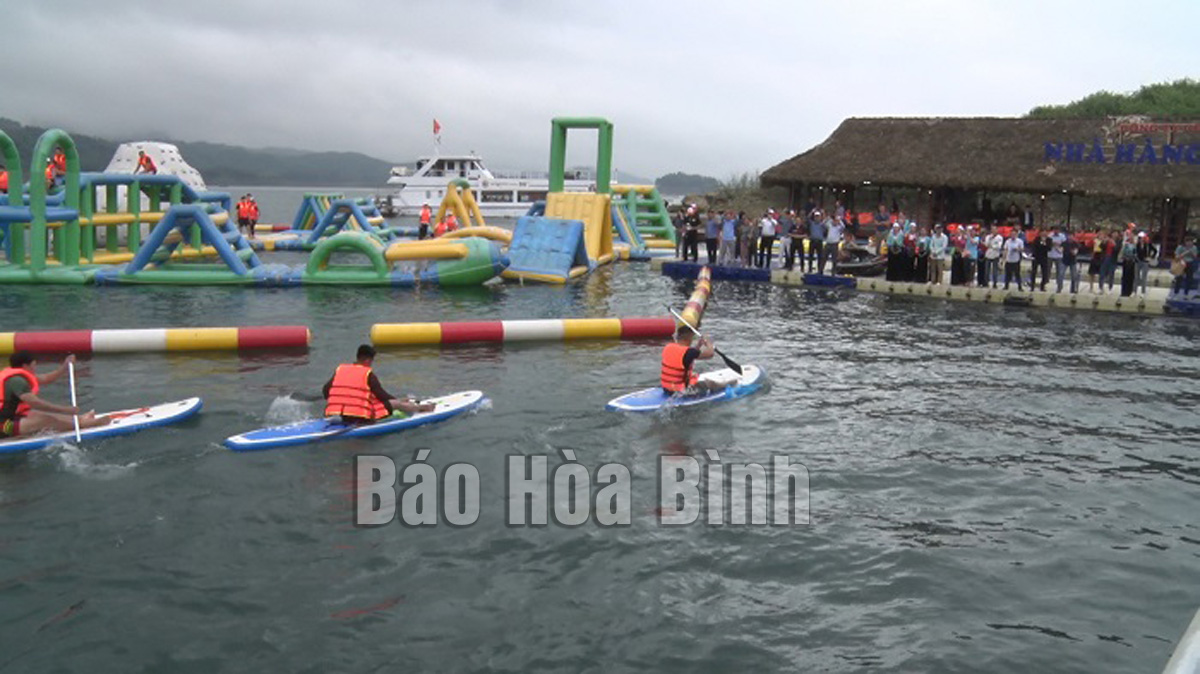
(HBO) – Tan Lac district, known as Muong Bi land in the past, aims to welcome about 270,000 visitors by 2025, earning some 85 billion VND from the tourism sector. To that end, the locality is working hard to lure more investments in tourism.
Local residents and tourists
attended the launching ceremony of green tours in Ngoi hamlet, Suoi Hoa last
April.
Tan Lac is rich in historical traditions and has been seen as the core of the
Hoa Binh culture. About 100km from Hanoi, the district serves as a gateway to
the northwestern region. It is home to 19 landscapes, archaeological sites and
cultural treasures of the Muong ethnic group.
In the past, tourists often flocked to Tan Lac in the spring to celebrate such
festivals as the Muong Bi Khai Ha (going down to the field), the Lo Son stream
fishing festival and the Ke Pagoda festival. However, Tan Lac now attracts
visitors throughout the year as the locality has invested much in tourism. It
has upgraded infrastructure and developed various tourism products like leisure
tourism, cultural tourism, eco-tourism and community-based tourism, in
combination with cultural preservation.
According to Dinh Son Tung, head of the district’s bureau of culture and
sports, Tan Lac has formed tourism hamlets like Luy Ai in Phong Phu commune,
Ngoi in Suoi Hoa commune, Chien in Van Son commune, and Buoi Cai in Phu Cuong
commune, with more than 10 families offering homestay services.
Luy Ai hamlet has preserved more than 50 traditional stilt houses of the Muong
ethnic group, along with tangible and intangible cultural heritage. It is one
of the 20 hamlets recognised by the Ministry of Culture, Sports and Tourism as
typical hamlets of ethnic groups nationwide.
Luy Ai has become a major tourism destination along National Highway 6, and
part of the tourism network in the northwestern region.
Apart from Luy Ai, Tan Lac plans to roll out the community-based tourism model
in other hamlets like Chieng, Ton Trong and Lu in Van Son commune, Bac Thung in
Quyet Chien commune, Trang Ta in Nhan My commune, and Tham in Suoi Hoa commune.
Tourists will have chances to experience daily activities of locals, join
traditional cultural festivals and explore traditional culture there. They also
can go trekking, stroll or ride a bike around the villages. Those who love to
discover local landscapes and cultures would love to explore Thac Bo, Hoa Tien,
Nam Son and Muoi caves that have been recognised as national relic sites, and
other provincial relic sites such as Nui Kien cave, Cot Co Mount, Trang
waterfall, and the Ngoc Son-Ngo Luong nature reserve.
To get exotic experiences, visitors should visit the tourism-culture site in
Ngoi hamlet, Suoi Hoa commune, where seven stilt houses have been standardized
for tourism services. A water park and a floating restaurant have also been put
into operation.
When the COVID-19 outbreak was basically put under control in Hoa Binh province
last April, Hoa Binh Tourism Services JSC launched green tours in Ngoi Hoa,
where holidaymakers can engage in water games and visit tourist sites.
With consensus of all-level Party committees, authorities and people in tapping
tourism potential, Tan Lac has created its own attractiveness in tourism./.
(Member
of the provincial journalists’ association)
Located just a 20-minute drive from Hoa Binh City, Ora Hill Farmstay & Glamping Hoa Binh is a captivating new destination nestled in Mo hamlet, Bình Thanh commune, Cao Phong district. Combining farming with leisure, this tranquil retreat is perfect for those seeking balance, joy, and an immersive experience in the expansive beauty of nature.
Muong Bi - Tan Lac is renowned as one of the four famous Muong regions in Hoa Binh province. Blessed by nature with a favourable climate and stunning landscapes, Tan Lac holds great advantages for tourism development. The local tourism industry has made remarkable strides in recent times thanks to the attention and support from the local authorities and sectors.
With its strategic location, well-developed transport network, and diverse soil and climatic conditions, Hoa Binh is emerging as a must-visit destination in Vietnam's northwestern tourism corridor. The province boasts numerous attractions, including the Kim Boi hot springs (Kim Boi district), the Dau Rong cave complex (Cao Phong), the Mai Chau valley (Mai Chau), and the iconic Hoa Binh hydropower plant.
The northern mountainous province of Hoa Binh has been listed among the 71 most beautiful places to visit worldwide by the prestigious US travel magazine Condé Nast Traveller.
Hoa Binh province’s rich natural and cultural resources position it as a prime location for developing community-based tourism (CBT). In recent years, support from central and provincial policies, as well as assistance from non-governmental organisations, have encouraged local ethnic minority and mountainous communities to actively engage in the sector.



